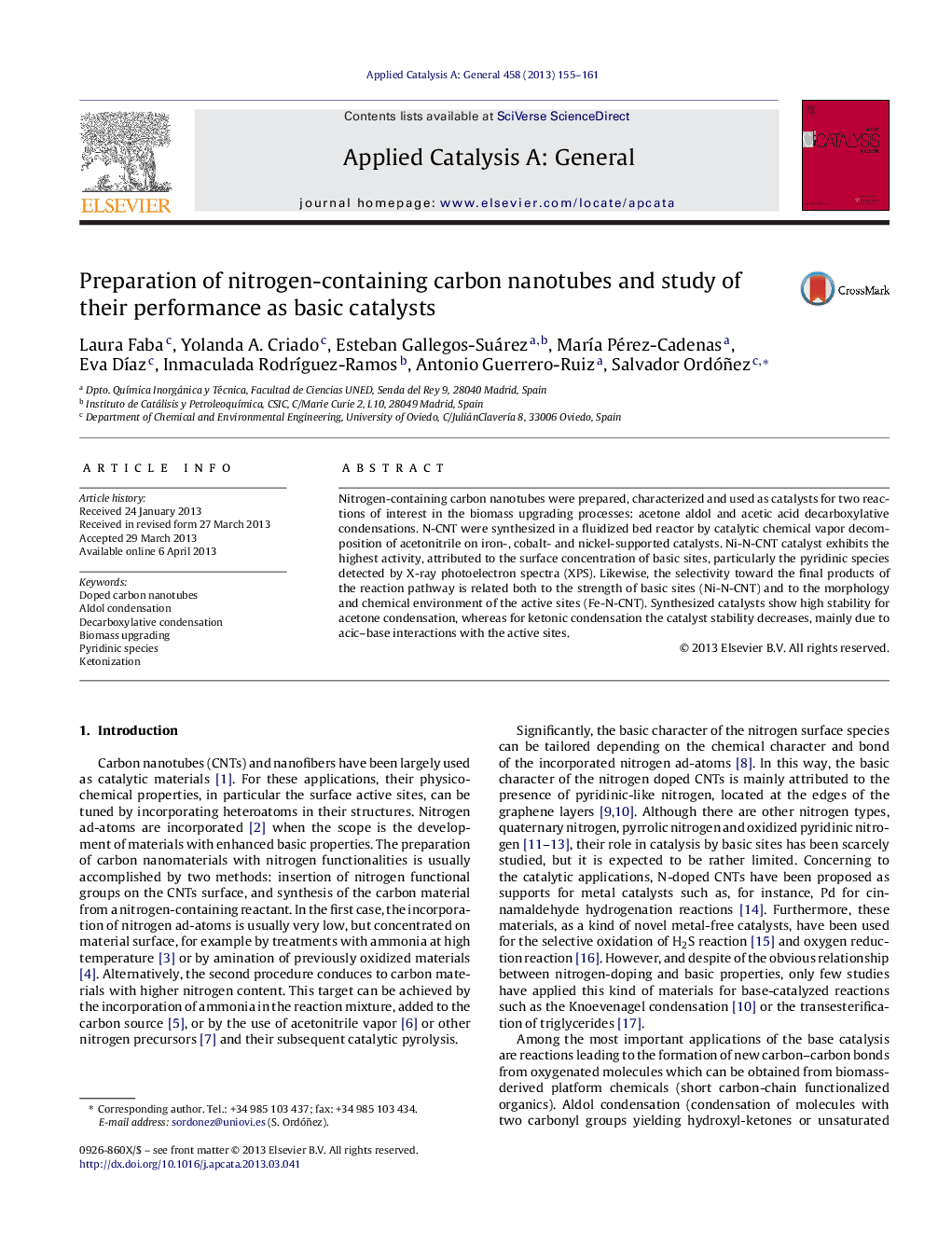| Article ID | Journal | Published Year | Pages | File Type |
|---|---|---|---|---|
| 40452 | Applied Catalysis A: General | 2013 | 7 Pages |
•Nitrogen-doped CNTs prepared using acetonitrile as precursor.•Different metals (Fe, Co, Ni) as catalysts for preparing different N-CNTs.•Tested as catalysts for acetone aldolization and acetic acid ketonic condensation.•Activity for both reactions depends on pyridinic sites concentration.•Catalysts are more stable for aldol condensation.
Nitrogen-containing carbon nanotubes were prepared, characterized and used as catalysts for two reactions of interest in the biomass upgrading processes: acetone aldol and acetic acid decarboxylative condensations. N-CNT were synthesized in a fluidized bed reactor by catalytic chemical vapor decomposition of acetonitrile on iron-, cobalt- and nickel-supported catalysts. Ni-N-CNT catalyst exhibits the highest activity, attributed to the surface concentration of basic sites, particularly the pyridinic species detected by X-ray photoelectron spectra (XPS). Likewise, the selectivity toward the final products of the reaction pathway is related both to the strength of basic sites (Ni-N-CNT) and to the morphology and chemical environment of the active sites (Fe-N-CNT). Synthesized catalysts show high stability for acetone condensation, whereas for ketonic condensation the catalyst stability decreases, mainly due to acic–base interactions with the active sites.
Graphical abstractFigure optionsDownload full-size imageDownload high-quality image (157 K)Download as PowerPoint slide
